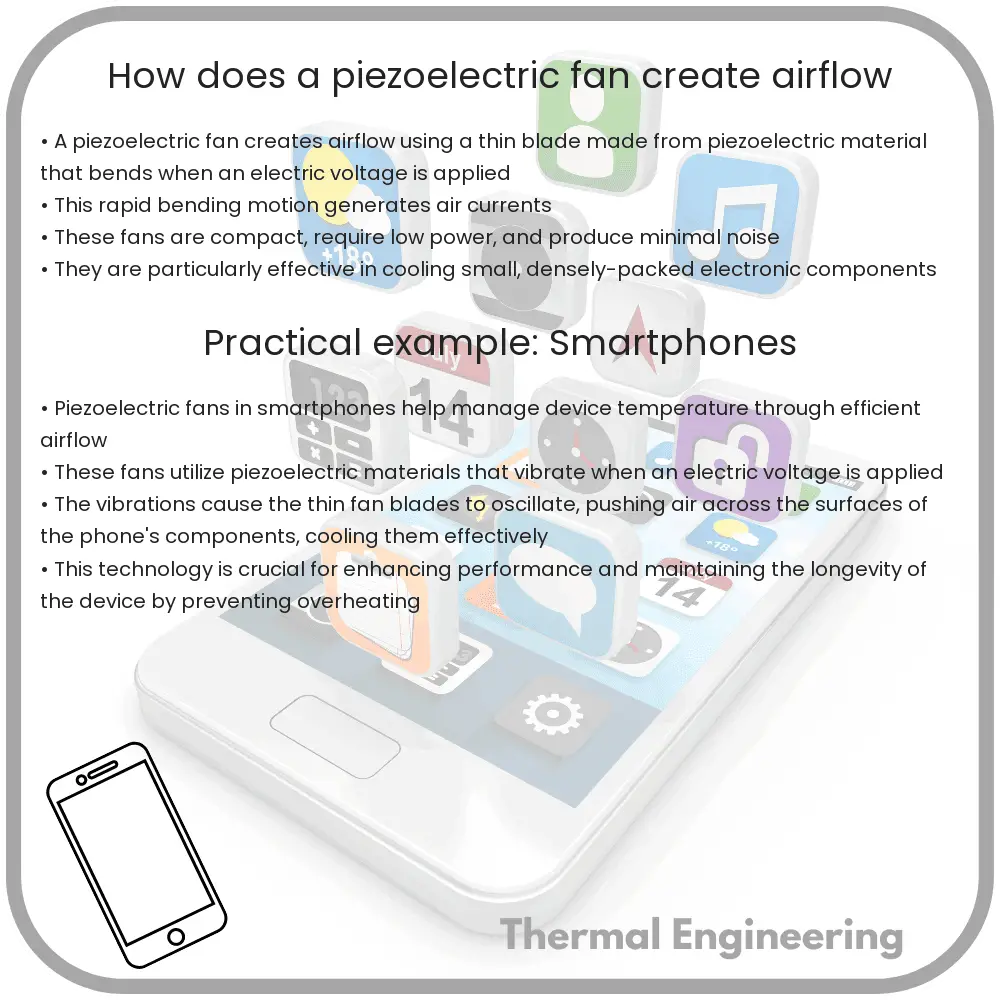Learn how piezoelectric fans use piezoelectric materials to create airflow, offering compact and efficient cooling solutions.

Understanding the Functioning of Piezoelectric Fans
Piezoelectric fans are fascinating devices that leverage the physical properties of piezoelectric materials to create airflow. These compact and energy-efficient fans are commonly used in various applications where conventional cooling methods are impractical due to size constraints or energy consumption concerns. Today, we’ll explore how a piezoelectric fan operates and the principles behind its ability to move air.
What is Piezoelectricity?
Piezoelectricity is the electric charge that accumulates in certain solid materials (such as crystals, certain ceramics, and biological matter like bone, DNA, and various proteins) in response to applied mechanical stress. The word piezoelectricity means electricity resulting from pressure. It was discovered in the 1880s by Jacques and Pierre Curie.
Structure and Composition of a Piezoelectric Fan
A piezoelectric fan typically consists of a thin blade made from a piezoelectric material attached to an electronic driver. The piezoelectric material, often lead zirconate titanate (PZT), expands or contracts when an electric voltage is applied. This characteristic is critical in the function of the fan.
How Does a Piezoelectric Fan Create Airflow?
The operation of a piezoelectric fan is relatively straightforward:
- Application of Voltage: When voltage is applied, the piezoelectric material deforms due to the piezoelectric effect.
- Oscillation: The electrical input is typically alternating current (AC), which causes the piezoelectric material to oscillate. This oscillation happens because the polarity of the applied voltage changes, alternately expanding and contracting the material.
- Blade Movement: The rapid oscillation of the material causes the fan blade to vibrate. Depending on the design, the blade might vibrate in a bending, twisting, or elongating manner.
- Air Displacement: The movement of the blade displaces air around it, creating airflow. The design and frequency of the vibration can influence the direction and speed of the airflow.
Advantages of Piezoelectric Fans
Piezoelectric fans offer several benefits over traditional cooling methods, such as:
- Compact Size: They are smaller and lighter than most mechanical fans, making them ideal for applications with limited space like electronic devices.
- Low Power Consumption: These fans consume less power, which is crucial in battery-operated devices.
- Less Mechanical Wear: Piezoelectric fans have fewer moving parts, reducing mechanical wear and increasing reliability.
- Quiet Operation: They generally operate more quietly than conventional fans, an essential feature in noise-sensitive environments.
Applications of Piezoelectric Fans
The unique properties of piezoelectric fans make them suitable for a variety of applications:
- Electronics Cooling: Used in laptops, projectors, and other compact electronic devices.
- Medical Equipment: Ideal for cooling in noise-sensitive equipment like MRI machines.
- Industrial Systems: Employed in specialized cooling systems where traditional fans cannot be used due to environmental factors.
In summary, piezoelectric fans are an innovative solution to small-scale cooling challenges, offering efficiency and reliability where traditional methods fall short. Their operation, based on the fundamental principles of piezoelectricity, showcases a wonderful synergy of materials science and mechanical design.